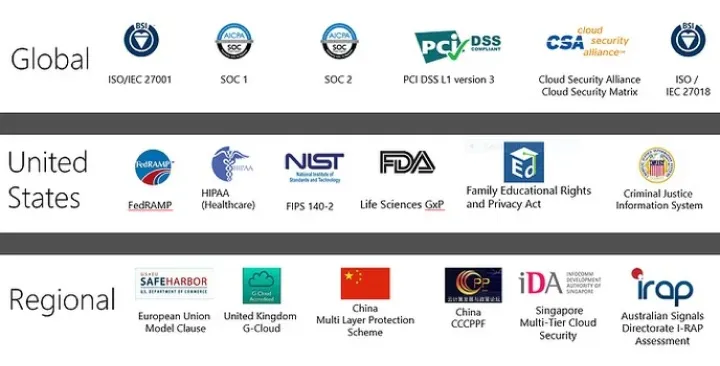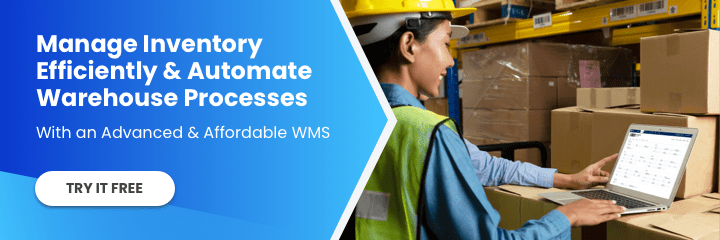Logistics technology has changed significantly over the years. Recently, cloud logistics technology solutions have become the go-to technology to help simplify business operations and reduce technology costs.
Click Here: Improve Your Operational Efficiency and Uptimes with Managed IT Solutions Solution
Despite all the benefits that the cloud can provide, the reality is the cloud is not a magic bullet. Cloud computing is a tool in an arsenal of logistics technology solutions that must be evaluated against the business’s needs.
Decision makers assume that the cloud is the perfect solution because it will save them ‘X’ amount of dollars. But is it going to bring those savings? And what about system integration or data security?
A solution cannot only be measured by how much money it will save. You can’t ignore the technology’s capabilities or the accumulative costs over time.
Other aspects must also be considered. For example: How would it make the business leaner? How can it improve employee productivity? How can it make the business more efficient? What impact could it have on customers?
In the end, all this has a direct impact on your bottom line.
What is Driving Your Business to the Cloud?
This is one of the most important questions when considering moving to the cloud. Think beyond the savings and ask yourself questions like:
- Does my business have in-house expertise to maintain current systems and applications?
- Do systems need to run 100% of the time, or can they be down occasionally?
- Is the current in-house infrastructure (servers, network devices, etc.) sufficient to run systems without delays or downtimes?
- Can the current infrastructure scale and meet future business needs?
- Does my business have a reliable backup & disaster recovery solution?
Write down the answers to these questions, as they will help you determine if moving to the cloud is a reasonable option for your business. Don’t be sold by the “cloud” marketing buzz.
Evaluating Logistics Cloud Providers
By now, you’ve collected a list of requirements that a cloud logistics technology provider must satisfy. This is what we refer to as Strategic Business and Technology Alignment, which is the process of ensuring that every technological decision is aligned with business goals.
Step 1: Research their Service Model
Once you’ve completed the list, it’s time to research and find cloud providers that offer the required solution. Evaluate their services against your requirements.
If you are looking for software that runs from the cloud, you will need a SaaS (Software as a Service) vendor, but if you are looking to run servers from the cloud, you will need an IaaS (Infrastructure as a Service) provider. For a platform to program and test software, then you need a provider that offers PaaS (Platform as a Service).
Here is a short video that explains the three basic service models (SaaS, IaaS & PaaS):
Step 2: Understand their Pricing
Although there are many pricing models around cloud computing (Pay-as-you-go, subscription, resource pooling, etc.), we will focus on the two most common cloud pricing models and offer insight into each.
| Pay-as-you-Go | Subscription | |
| Pricing Approach | Price remains constant/static on an hourly basis | Price is based on the period (monthly, annually, etc.) of the subscription |
| Pros | Customer knows exactly how much is going to be paying | Customer may underpay if it uses reserved resources extensively |
| Cons | When demand is low, customer may end up paying higher than the market price | Customer may overpay if reserved resources are not used extensively |
| Who Benefits? | The Provider. Customer may end up paying more. | Not a clear winner. Customer sometimes overpays or underpays |
Selecting the appropriate pricing model can make all the difference between reducing operating costs and losing money.
Step 3: Evaluate their Security
Cloud security is one of the most sensitive and important aspects to consider when moving to the cloud. Your business’s security is of the utmost importance!
When choosing a cloud logistics technology provider, ensure all systems are hosted in locations that offer physical security and are monitored around the clock.
Verify that attacks against systems are monitored 24/7 and that quarterly and annual penetration tests are conducted.
The following illustration provides an idea of the basic security elements that a cloud provider must have in place:

For companies that need to follow specific compliance requirements, it is recommended that they check whether the cloud vendor complies with the following global, U.S., or regional security standards.
Ask for proof of compliance; do not take the words of the salesperson or marketing materials.
Here’s a list of well-known compliance and security standards:

Source: Microsoft
Step 4: Understand their Hosting Locations and Disaster Recovery Capabilities
When selecting a cloud logistics provider, it’s important to understand where systems and data are hosted and what happens if a location fails. Verify the following:
- Number of data centers. Ask providers how many data centers are running their systems. Make sure that systems are running across at least two data centers. Trust but verify.
- Data center location. Ask for the physical location where your system(s) will run. Make sure that the data center (s) is not in a flood zone, the corridor of hurricanes or tornados, or an area affected by earthquakes.
- History of service failure. Ask for a history of downtimes – including recurrence, time length, and reason). If the vendor doesn’t provide this information or you don’t feel the vendor is being honest, you can always search for it on Google. For example, “vendor name” down or “vendor name” downtimes.
Performing a Financial Analysis
The final step in selecting a cloud provider is conducting a financial analysis. Make sure your operating costs don’t go out of control and that you will meet saving expectations.
For this, you want to conduct a Total Cost of Ownership (TCO) analysis to help determine the system’s direct and indirect costs throughout its lifetime. Also, complete a Return on Investment (ROI) evaluation to measure the investment efficiency or return on your invested capital across the different options within the same period of time.
When calculating the TCO and ROI of cloud vs. in-house and costs across different cloud vendors, consider the following:
For In-house, consider the following costs:
- Hardware and software (initial investment and renewal costs)
- Real estate to host the system(s)
- Human resources to implement and maintain the system(s)
- Electrical power consumption
For cloud, consider the following costs:
- Pricing model
- Cost per machine based on resources
- Cost per storage
- Cost for data transfer
- Cost for special features like IP addresses, load balancing, IPS/IDS, data replication, etc.
- Cost for support
Although most cloud solutions have no or very minimal upfront costs, they do have recurring and hidden costs. Remember, you will be paying every month for a cloud-based system, and costs will accrue with no residual value left on your balance sheet.
Depending on your needs and business requirements, the cloud can make you money OR cost you more than having systems in-house.
If you are serious about making a sound business and technical decision, follow this guide.
We’ve covered the most important elements for selecting a cloud provider for your supply chain and/or logistics business. If you have any questions or concerns, please contact us. We’re always here to help.
For more warehouse content, you can follow us on LinkedIn, YouTube, X, or Facebook. If you have other inquiries or suggestions, please contact us here. We’ll be happy to hear from you.












